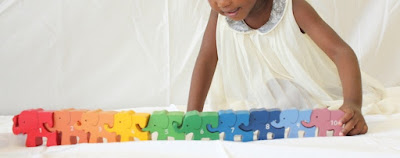Handwriting - Where do we start?
Very often, I come across young mothers who are eager to start handwriting with their toddlers.
 "Any tips on which hand I should make him practice with? We are mostly lefties in our family, but he uses both hands equally while playing. Should I train the left anyway?" (mother of a 2.5 yr old)
"Any tips on which hand I should make him practice with? We are mostly lefties in our family, but he uses both hands equally while playing. Should I train the left anyway?" (mother of a 2.5 yr old) "Should I guide him with hand-over-hand, or let him try out on his own?" (mother of a 3 yr old)

Gross Motor Skills Before Fine Motor Skills
Lets go back to my analogy of the mango tree and pumpkin plant. Just as the mango tree has a strong trunk that supports its branches and fruit, children need strong core muscles to support finer movements. Without that foundation, it’s challenging for children to move on to more advanced skills like writing, cutting with scissors, or even manipulating small objects.
When working on developing or improving handwriting, start with activities that strengthen core stability, such as crawling, playing on all fours, or climbing. These activities can help ensure the child has a solid base to build on. Once the trunk is stable, you can gradually introduce more fine motor tasks, confident that the foundation is in place.
The activities that help improve core strength and stabilty also work on improved overall motor development, balance, posture, and coordination.
Some examples of activities that promote trunk and core strength are:
- obstacle courses or tunnels for children to crawl through, or play games that involve crawling under objects or through play tunnels.
- therapy ball activities (make the child sit on an exercise ball or a balance cushion while supervised and engage them in games like tossing a ball back and forth, or lifting one foot off the floor to increase the challenge.)
- animal walks
- bridging (ask the child lie on their back with knees bent and feet flat on the ground, and then lift their hips up to form a bridge. They can hold this position or try to balance a stuffed toy on their belly for fun.)
- simple yoga poses
- active play on swings, monkey bars, or climbing frames at a playground. Climbing ladders, ropes, or cargo nets are also very good for building core strength.
- scooter board activities and games.
Now that we have started well, we are already halfway through progress. What's next is for another day and another post.
Until next time, happy core strengthening! Enjoy the progress and play!


Comments
Post a Comment